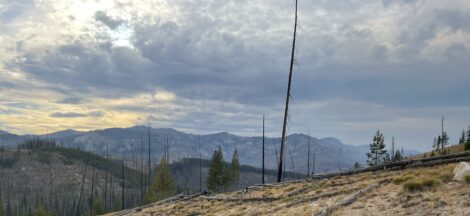Preparing for Your First Deer Hunt: A Comprehensive Guide
Embarking on your first deer hunting adventure can be both exhilarating and intimidating. From selecting the right gear to understanding deer behavior and learning the nuances of tracking, there’s a lot to absorb. Fear not, this comprehensive guide will help you prepare for your first deer hunt and set you up for success in the great outdoors.
Research and Planning
Before you head out on your first deer hunting expedition, you need to do your homework. This involves understanding the laws and regulations in your hunting area, choosing the right location, and selecting the appropriate gear. Here’s a rundown of essential research and planning steps:
- Know the regulations: Familiarize yourself with the hunting laws and regulations in your area. Obtain the necessary hunting licenses and tags, and understand any restrictions related to deer hunting, such as bag limits, hunting hours, and specific legal hunting methods.
- Select a hunting location: Choose a hunting area with a healthy deer population. Public land is often a great starting point for new hunters. Consult local wildlife agencies, hunting forums, and other experienced hunters for advice on finding the best spots.
- Scout your hunting area: Spend time scouting your hunting location before the season begins. Look for signs of deer activity, such as tracks, droppings, and bedding areas. This will help you identify prime hunting spots and increase your chances of success.
- Choose the right gear: Select appropriate clothing, footwear, and equipment for your hunting trip. This includes camouflage clothing, comfortable and durable boots, and essential hunting gear like a backpack, binoculars, and a hunting knife. Invest in quality gear that will last you through many hunting seasons.
- Practice your shooting skills: Before you head out into the field, it’s crucial to practice your shooting skills. Spend time at a shooting range or practice in a safe, designated area. Become familiar with your firearm, and work on your accuracy and shot placement.
Understanding Deer Behavior
To increase your chances of a successful hunt, you must understand deer behavior and patterns. Familiarize yourself with the following aspects of deer behavior:
- Feeding habits: Deer are herbivores and primarily feed on plants, grasses, and other vegetation. They typically feed early in the morning and late in the evening, so plan your hunting schedule accordingly.
- Bedding areas: Deer often bed down during the day in areas that provide cover, such as thickets or tall grass. Identifying these bedding areas can help you determine where to focus your hunting efforts.
- Rutting season: During the rut (mating season), deer become more active and less cautious. This presents an excellent opportunity for hunters, as deer are more likely to respond to calls and scents during this time.
- Deer movement patterns: Deer tend to follow established trails and corridors between feeding and bedding areas. Familiarize yourself with these patterns and set up your hunting stand or blind near these routes for a better chance of encountering deer.
- Scent control: Deer have an excellent sense of smell, so it’s important to minimize your scent while hunting. Use scent-control products, avoid using strong-smelling soaps or deodorants, and always approach your hunting area from downwind.
Hunting Techniques
There are several hunting techniques you can use to increase your odds of success. Some popular methods include:
- Spot and stalk: This method involves scanning the landscape with binoculars or a spotting scope, looking for deer. Once you’ve spotted a deer, plan a careful approach to get within shooting range without spooking the animal.
- Still hunting: Still hunting involves moving slowly and quietly through the woods, stopping frequently to listen and observe your surroundings. This technique requires patience, stealth, and a keen awareness of your environment.
- Using hunting blinds or stands: Setting up a hunting blind or tree stand can help conceal your presence and increase your chances of getting close to deer. Choose a location with good visibility and ensure you’re well-hidden from the deer’s line of sight.
- Using deer calls and scents: Deer calls and scents can be useful tools for luring deer into range. Learn how to use these tools effectively, and pay attention to the timing and frequency of your calls to avoid spooking the animals.
Safety Tips
Deer hunting can be an enjoyable and rewarding experience, but it’s essential to prioritize safety. Keep these safety tips in mind while hunting:
- Treat every firearm as if it’s loaded: Always handle your firearm with care and keep the muzzle pointed in a safe direction. Never point a firearm at anything you don’t intend to shoot.
- Identify your target and what’s beyond it: Before taking a shot, be sure of your target and what lies beyond it. This will help prevent accidents and ensure that you’re taking a responsible, ethical shot.
- Wear blaze orange: Wearing blaze orange clothing increases your visibility to other hunters and reduces the risk of accidents. Be sure to wear a blaze orange hat and vest while hunting.
- Carry a first aid kit and emergency supplies: Accidents can happen in the field, so it’s essential to be prepared. Carry a first aid kit, emergency supplies, and a means of communication in case you need assistance.
- Let someone know your plans: Before heading out on your hunt, inform a friend or family member of your planned location and expected return time. This way, if anything goes wrong, someone will know where to look for you.
With thorough preparation, a solid understanding of deer behavior, and a focus on safety, you’ll be well on your way to a successful first deer hunt. Remember, hunting is a skill that takes time to develop, so be patient and enjoy the learning process. Good luck, and happy hunting!





 Crucial Deer Hunting Safety Guidelines
Crucial Deer Hunting Safety Guidelines